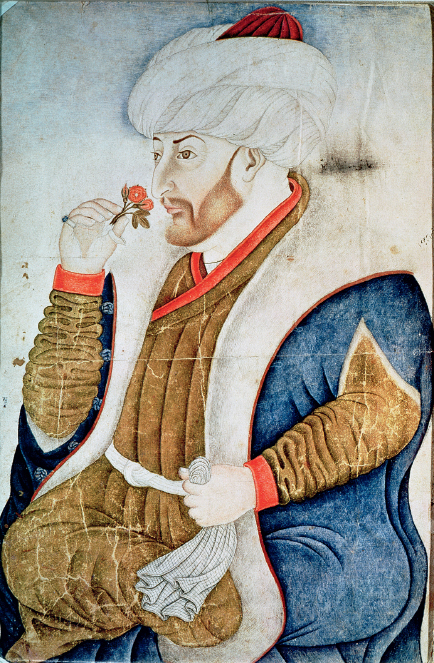How were the three Islamic empires established, and what sorts of governments did they set up?

Sultan Mehmet IIMehmet was called “the Conqueror” because at age twenty-one he captured Constantinople and ended the Byzantine Empire, but he is also known for his patronage of the arts and appreciation of beauty. (Topkapi Palace Museum, Istanbul, Turkey/Giraudon/The Bridgeman Art Library)
BBEFORE THE MONGOLS ARRIVED in Central Asia and Persia, another nomadic people from the region of modern Mongolia, the Turks, had moved west, gaining control over key territories from Anatolia to Delhi in north India. As Mongol strength in Persia and Central Asia deteriorated in the late thirteenth to mid-fourteenth centuries, the Turks resumed their expansion.
In the late fourteenth century the Turkish leader Timur (1336–1405), also called Tamerlane, built a Central Asian empire from his base in Samarkand that reached into India and through Persia to the Black Sea. After his death, his sons and grandson fought each other for succession. By 1450 his empire was in rapid decline, and power devolved to the local level. Meanwhile, Sufi orders (groups of Islamic mystics) thrived, and Islam became the most important force integrating the region. It was from the many small Turkish chiefs that the founders of the three main empires emerged.
